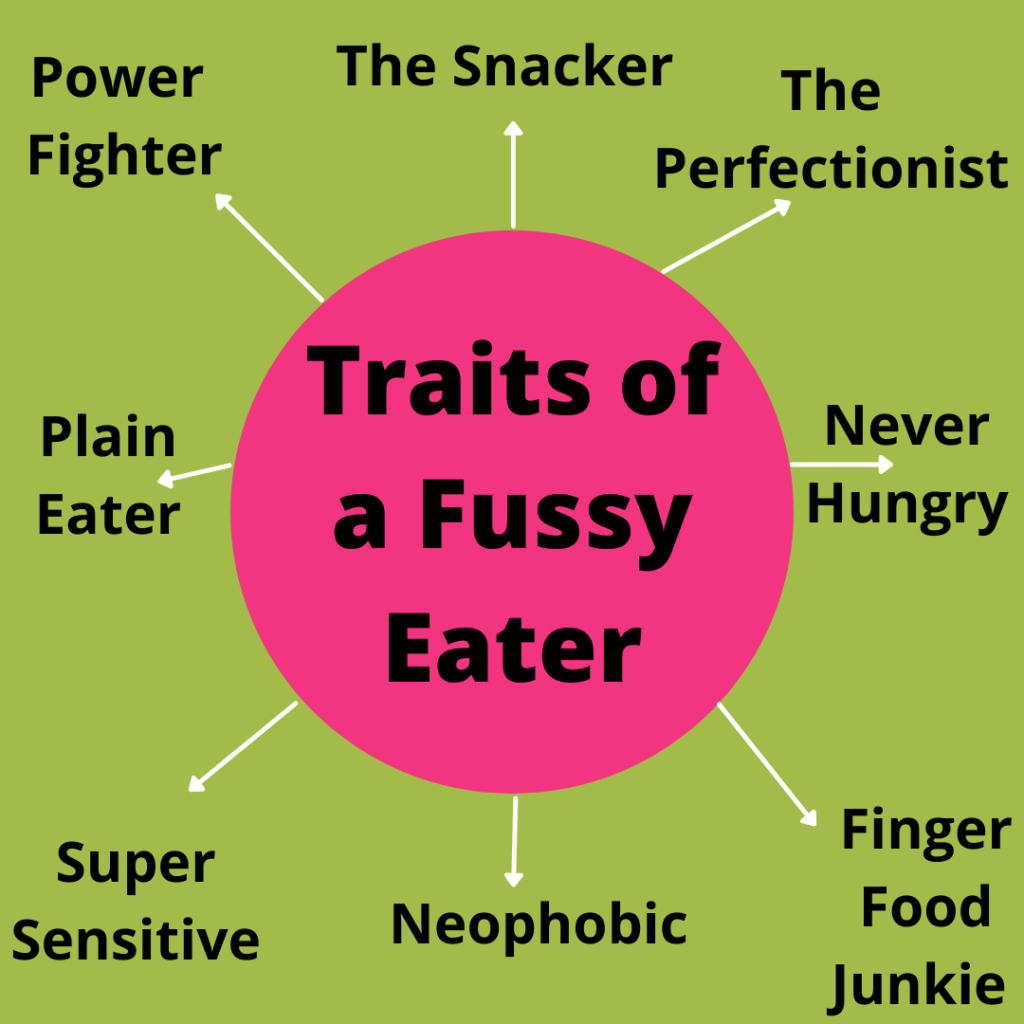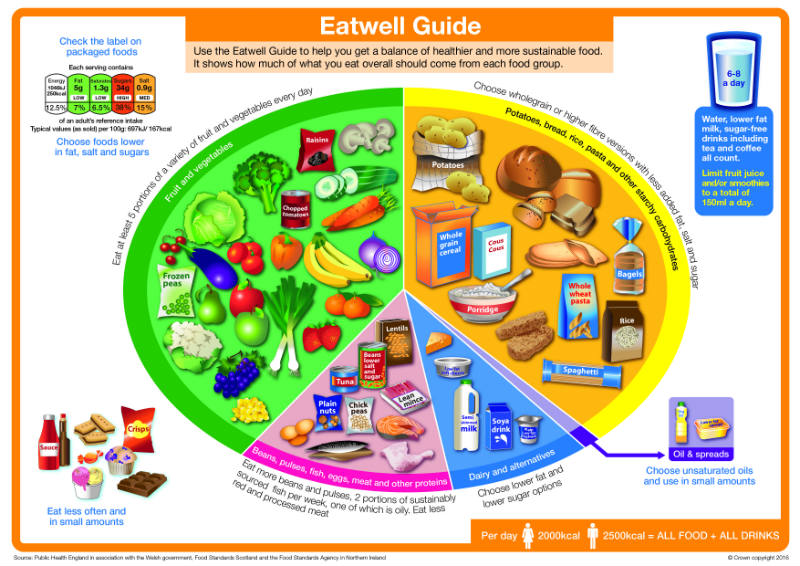What is Fussy Eating and Do I Need To Worry?
What is Picky Eating and Do I Have To Worry?
Picky eating is seen in children who are reluctant to eat substantial amounts of food that are not familiar to them therefore consuming an inadequate variety of foods and there is no need to worry if you follow the guidance below.
What causes picky eating?
There are a number of factors that may cause fussy eating in your child including;

- Food Neophobia – Food Neophobia is generally regarded as the resistance to eating or reluctance to trying new foods.
- Hunger – some children may not be growing as fast therefore not having as large of an appetite.
- Pain – It is important that if your child is suffering from fussy eating that you monitor their toilet habits. If your child is in pain when going to the toilet it could be one of 2 factors: Constipation or Diarrhoea. If your child is suffering from constipation click HERE to see the symptoms and how to treat it.
- Teething – At this stage in your child’s life they may be going through teething, this will have an effect on their eating habits as their mouth is likely to be inflamed and tender, your child may opt for softer foods.
- Food Preferences – Is your child a beige eater?, crave sweet or finger foods? or have a small appetite.
- Meal Timings – the timings of meals, snacking, tiredness and independence all come into consideration to why your child may be a fussy eater. it is important that you monitor these factors in order to see what can be improved to limit your child’s fussiness.
- Allergies or Reflux as a baby – Reflux and allergies if not managed well as a baby could lead to fussy or picky eating tendencies later on. Children can become aversive to ‘new’ foods or textures or ‘the spoon’ because they associate food or anything coming near their mouth as causing them pain in the past.
Traits of a Fussy Eater…

1. The Snacker – This is not necessarily a bad thing especially in younger children who have small tummies. Make sure there is a difference in what you offer between meals and snacks so that there is a variety of foods offered.
2. The Perfectionist – Have you noticed your child throwing a tantrum if the banana broke in half? Or the meat is not cut in a certain way? This is all part of the child exerting their independence. Don’t worry about these tendencies as they are part of their development – go with the flow.
3. Never Hungry – Children grow at different rates. They are in tune with their appetite so trust this instinct. Ask yourself, are they growing and thriving? Look at how often they eat and how much milk or fluids they drink because this could be filling them up. Make sure there is at least 2 hours between meals and snacks and give smaller snacks.
4. Finger Food Junkie – Children like to self-feed so they have more control of what they are putting in their mouth. Therefore some children prefer to eat with their fingers. This is fine. Meet then halfway. For example if you are having spaghetti bolognaise for dinner don’t automatically think you have to make them something different, rather present it in a different way – eg meatballs rather than mince and penne or twist pasta instead of spaghetti. This is the same ingredients, flavours and smells but in a more acceptable format!
5. Neophobic – This is a fear of new or novel foods. For young children this can mean a natural fear of foods they’ve never seen before. For older children it could be a learned fear from a previous traumatic episode. The important thing is to listen to them and understand that this is real.
6. Super Sensitive – Children have heightened senses. Some more than others. They smell, see, hear, and feel everything more than adults. Offer plainer foods and be aware of their likes and dislikes.
7. Plain Eater – Read on to find out more.
8. Power Fighter – Children have the same emotions as us and when they feel powerless or not listened to, they will try to gain some control. Give them some! For example give them a choice of 2 different meals for dinner but you choose the meals! It is their choice to eat it or not, that’s fine. A couple of nights per week the whole family could eat what your fussy eater likes, the rest of the week you could adapt your meals slightly to make them more acceptable to your fussy eater. This shows them that they have been listened to and makes it more likely they will try a slightly different (more nutritious) version of their normal meals.
Should I be worried about my child’s fussy eating?
It is natural to worry when your child is refusing food or reluctant to trying new foods. It is perfectly normal for your toddler to be reluctant to trying new foods, however you should be monitoring what they eat over the period of a week rather than day to day.
When should I start to worry?
If your chid is reasonably active and gaining weight and they seem of good health then it is unlikely your child is not eating enough or eating the correct foods.
You should be concerned if your child:
- Is not consuming foods from the 4 main food groups; fruit and vegetables, pasta, potatoes bread rice and other starchy carbohydrates, dairy or dairy alternatives, beans, pulses, fish, eggs, meat and meat alternatives over a long period of time.
- Not gaining appropriate weight or height for their age.
- Has been diagnosed with iron deficiency anaemia.
- Lacking in energy and is not capable of doing normal everyday activities.
Click HERE to find out what your child should be consuming per day for a 1-2 year old.
Click HERE for an example meal plan for a 2-4 year old.
If you have concerns that their fussy eating is affecting their health then it is important to get professional advice by contacting your GP or dietitian.
What can I do to help my child overcome fussy eating?

Make Mealtimes Happy
The best way to encourage your child to try new foods is for them to copy you. Ensure the family is all sitting down together at meal times and ensure your child is consuming the same food as you as long as there is no salt added to their food.
Give small portions and praise your child for eating no matter how little they eat, whilst keeping meal times relaxed.
Do not leave meals until your child is overly hungry, ensure your child is eating regularly at correct meal and snack times.
Don’t let meal times drag on, set a time frame for eating max 30 minutes. Show your child this time on the clock and explain that the meal time is over when the big hand gets to……
Don’t Force your Child
It is important that you do not try to force your child to eat anything they do not want this will only result in them eating less. Force feeding will cause your child to have no control over their eating therefore causing under eating or over eating in the long run. It could also cause a bad experience for your child and put them off trying new foods in the future.
Watch out for too much milk drinks
When your child is consuming too much liquid it fulfils their hunger and makes them feel full before they have even eaten. It is important that your child is consuming the correct amount of milk and water consumption per day in order to prevent it interfering with the development of healthy eating habits.
Don’t offer any more than 100mls of water or milk at meal or snack times.Try not to offer milk at every meal or snack timeIf your child likes to drink before they eat, hold off fluids until half way through the meal or snack.
Space out Meal and Snack Times
It is extremely important that your child’s eating is spaced out throughout the day. Start by encouraging meal times as a family. Offer 3 main meals, breakfast, lunch and dinner per day including 4 of the 5 food groups form the Eatwell guide.
Although not necessary, snacks could be offered between meals especially for younger children. These should include 3 food groups from the Eatwell guide.
Offer water or milk with meals and snacks and ensure at least 2 hours between meals and snacks.
The 3 P’s
Patience – Have patience with your child, if you react and show frustration towards them it may cause them to become upset and even more reluctant to try new foods.
Perseverance – Overcoming fussy eating takes time and commitment. The more perseverance you have with your child the more likely they are to overcome fussy eating. DO NOT force feed your child.
Practice – Try practicing new healthy eating habits to encourage your child. Get your child into a routine of eating meals and snacks and slowly introduce new foods each time.
Go with the flow
If your child prefers to eat finger food, then give them finger food. You can alter the family meal to meet your child’s preferences. For example if you are having a roast chicken for dinner but your child prefers to eat drier/finger food then you could your child a chicken sandwich with the roast chicken or have chicken with roast potatoes rather than mash . All the same ingredients with the same smells and flavours but presented differently! They may prefer peas rather than baked beans. It is extremely important to work with your child to solve fussy eating habits rather than against them. Your child has likes and dislikes just like we do and these will change as they get older.
Let them self feed
By letting your child self feed it will allow them to feel more in control. Children like to exert their independence and want to feed themselves, especially younger children who use it as an opportunity to play! Ensure to have child appropriate cutlery in the house. Toddlers love forks which are easier to use than spoons and are great for finger foods. Eating along with your child encourages them to develop healthy eating habits. They will see you using a knife and fork or your hands to feed yourself and they will want to copy this action.
The important thing is to try not to feed them. This can become a learned behaviour to get more attention of you! They are also not concentrating on the task of eating because you have taken that away from them! This also happens when distractions like screens or toys are given to them to encourage them to eat. They are not mindful or present of the meal.
For older children encourage knives and forks. But don’t worry if they prefer their hands to eat. It’s easier and quicker that way. That’s a battle you can win another day! The most important thing is that their diet becomes more varied.
Ensure you are offering appropriate foods
It is difficult to please your child when it comes to eating. However, it is extremely important that you are offering them appropriate foods that are suitable for their age and nutritional needs. Plainer foods with not too much spice tend to be accepted better by younger children with inexperienced palates. Some foods that we prefer as adults have taken years to acquire a taste for them, so you may need to alter them to make them more acceptable for a child.

Get portions right
For an example of a meal plan and portion guide for a 1-2 year old click HERE. For a 2-4 year old click HERE.
Offer a variety of foods
By offering a range of foods from different parts of the Eatwell guide during snack and meal times will not only fulfil your child’s nutritional requirements but will encourage them to consume a larger variety of foods. It is important to offer a variety also to encourage your child to develop a taste for certain foods you eat as a family and will also give you a better idea of you child’s personal likes and preferences.
Managing Fussy Eating – Online Course
Would you like to get comprehensive guidance and advice for your picky eater? This online course is for you. It gives you lifetime access covering 13 topics from the psychology of meal times, feeding relationships, daily routine and portions to name a few. Plus you receive a free fussy eating booklet and lots of recipe ideas.
Get 10% off with this coupon code GOODFOODISHEALTHFUSSY. Make sure to input this code when you sign up. Click the button for more information.

